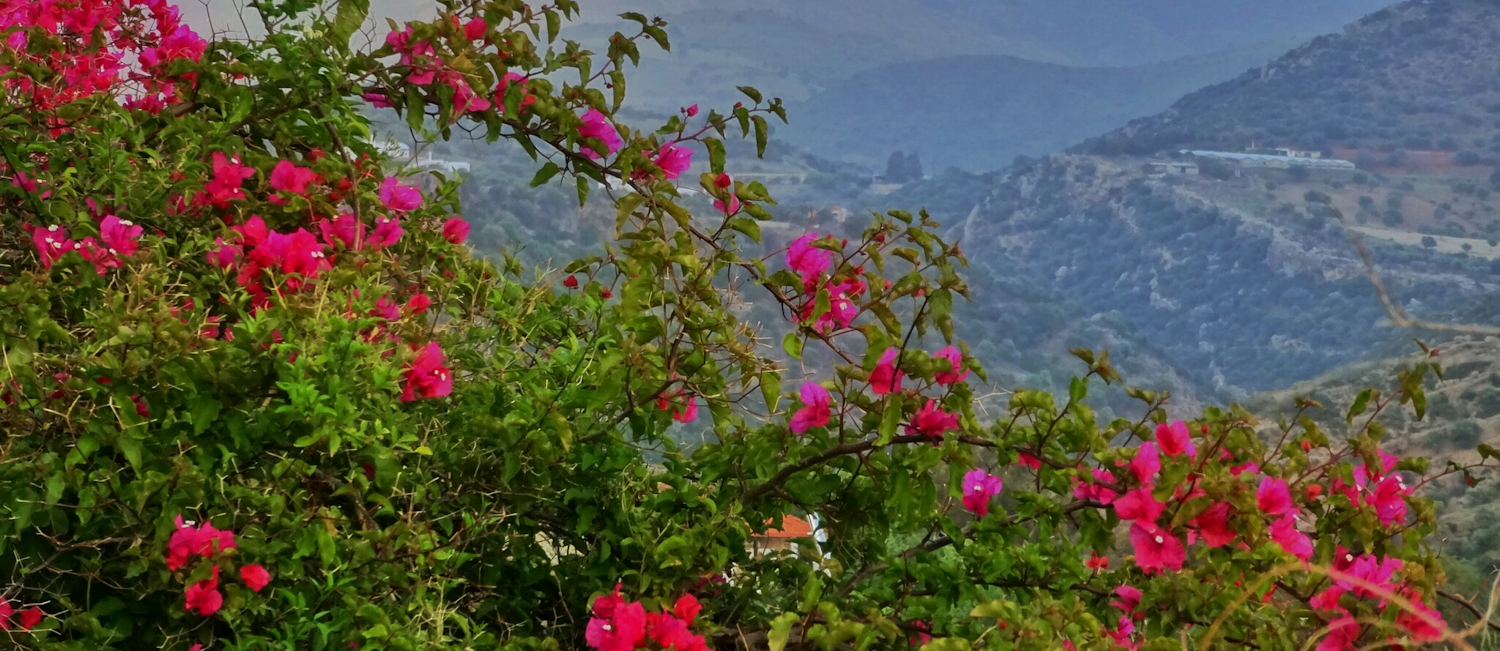A wonderful diversity
The Flora of Crete
More than 1.700 different plant species have been registrered in Crete, making it one of the most species-rich areas in Europe. And because of the island's isolation and its' inaccessible mountain regions, specific plant species have evolved over the millennia, that are found only in Crete and nowhere else on the planet - so called endemic species. Approximately 10% of Crete's flora is endemic. And the number grows, because even today botanists find new, unknown species isolated in the Cretan mountains.
Even for those who might not be especially interested in botany, Crete's flora is spectacular. Especially in the spring months the island is overwhelmingly lush giving the landscape a completely different look than in the parched summer months. But also at all other times of year you can enjoy the many and varied landscape types that Crete has to offer.
Only a few kilometers south of Villa Talea is Crete's highest mountains - Psiloritis. In the windswept heights where there may be snow up to 8 months a year, the landscape is alpine, covered by small, hardy plants. A little further down we find Rouvas forest, located on the south-facing slopes of the mighty Psiloritis mountains. The forest is one of the most beautiful natural areas in Crete and one of the few places where the island's indigenous natural forests are still widespread. Here, among other things large areas of cypress and Kermes oak grow, but also rarities as Zelkova abelicea (Cretan Zelkova - a relative of Elm) or the endemic orchid species Cephalanthera cuculata (Cretan Cephalanthera).
The cultivable land is primarily characterized by the extensive areas with olive trees (Olea europaea). Olive growing has been a central part of Cretan culture for over 5,000 years and some of the world's oldest, still living, olive trees are found on Crete. They are between 3.000 and 3.500 years old and still they are harvested like any other tree. But you also find oranges, lemons and other citrus fruits, bananas, avocado, carob and a variety of vegetables. Several crops can be harvested several times a year because of the warm weather and the fertile soil.
In between the cultivated plants grow wild plants. Cretans collect and use many of them in cooking. 'Ta Horta' is the common name for the wild herbs, which are very often part of the Cretan cuisine. Also lavender, oregano, thyme, sage and chamomile grow wild. Just go twenty yards up the little path behind Villa Talea - there they are. Also you will find a small shrub called Cistus creticus. From this is harvested a sticky resin called 'Labdanum' or 'Ladanum' which for millennia has been used as an ingredient in perfume and incense and for various medical purposes. A beautiful shrub, which grows on several slopes around the house.
The lower lying areas of Crete and Crete's coastline also offers botanical variation. From palm groves where the Cretan date palm (Phoenix theophrastii) grows, to salt marshes, and wetlands.
On these pages we have tried to give an insight in the Cretan flora. Using the menu you can read more about some of the different plants.

